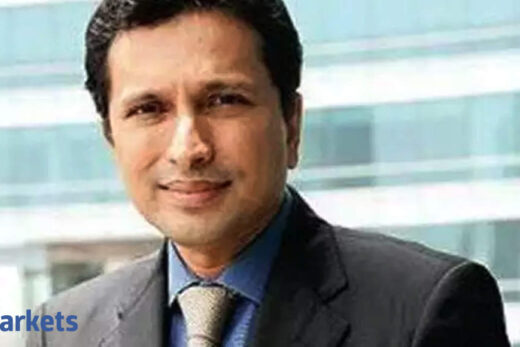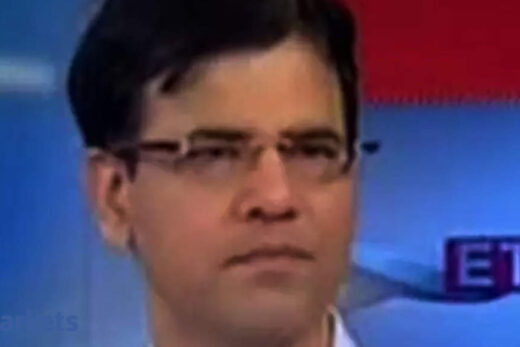In your latest note you have talked about how India was the leading hockey champion all through the 1920s up to 1970s, till the developed world upped its game and India was left far behind. What really changed the game for India?
Devina Mehra: Actually it happened not just in hockey, but in many sports. In hockey, literally the playing field changed. From natural turf or grass, it started being played in artificial turf, where a different set of skills became important like how fast you could run, how fit you were and things like that. In every game, either the field or the playing instruments changed. The other thing which changed was a lot of scientific inputs came in in terms of analysing people’s performance, in terms of the diet, in terms of literally every little bit of what they did mentally, physically and also what their competition did. All of that could be captured, analysed and people could be trained accordingly. So the whole system changed.
Did what transpire in sports over many decades now applicable to modern day investing as well? Is technology beating the game?
Shankar Sharma: We speak from experience. For at least 27 years, we have done it the old school way because there was no data and the cloud did not exist in our times. We laboured in a very old school manner. So we visited a company, came back to the office and said things like their plant was good or there was more inventory lying in the shop floor or the CEO’s vision was very good or the CFO looked very shady. All that was very old school and labour intensive.
If in the office 10 guys meet the same guy, they will come out with 10 different perspectives because each human being will react differently to another human being. You might like Shahrukh Khan, I might hate him or you might like Amitabh Bachchan, somebody hates him. That is the way human beings are. We are never ever uniform. We are very emotional in our approach.
In investing, that is absolutely the opposite of what you should be. One needs a consistent framework to pick. One should look at data and data alone. Human beings don’t matter. Don’t look at the CEO and his vision. Look at only data or the industry or the country. In the last two or three years, we decided that the way we have done business is not going to work because out of 10 bets, one or two will work spectacularly and eight or nine will not work. Almost all the returns come from those one or two bets and we call ourselves great investors. That is nonsense and even worse than a toss of a coin. We wanted to improve our odds so that 55% or 60% or 70% of our bets would be winning bets because that is the ultimate test of skill. Less than 50-50 is worse than a toss of a coin. So we decided to start getting deeper into the game of quantitative investing. Three years later. we feel sad that we did not have these benefits when we started our career. It is a whole different world and the way field hockey changed, investing is going to change the same way. It is inevitable.
Do you concur with Shankar? Do you think extremely advanced tech is going to do to investment management or portfolio management what it did to sport?
Devina Mehra: Yes, I am somebody who enjoyed the art part of the investing and I have done it since 1993 when neither the investors nor the companies had heard of equity research. I used to do these road trips and in a single day go from Motherson Sumi in Greater Noida to Bharti in Delhi to Carrier in Gurgaon and Hero Honda in Dharuhera and I enjoyed all of that.
But the investing game is not for fun or romance or satisfaction. If you are looking from an investor point of view and you want to optimise your risk returns, machine learning and artificial intelligence comes into play.
Number one, you can analyse a lot more securities, you are not constrained by the human constraints. Globally we look at 20,000- 25,000 securities and there is no way any human team can look at that. Number two, you can look at many more factors for each company. So right from financial ratios, you can look at first, second third derivatives of growth and we found some of them give very good signals. If you do these things physically as an analyst, you focus on five, six, seven financial ratios and that is about as far as you can go.
Thirdly, even if you had a thousand analysts analysing these 25,000 companies, there is no way what they will be looking at will be consistent. A machine is very consistent.
Number four, a machine is free of human biases.
Number five, a machine learns so that when you do something, some of it works and some of it does not work. As a human being, , even if you can see that, it becomes very difficult to acknowledge your mistakes and to trace why it happened and how to change your methods so that it does not happen again.
A machine can do that. It looks very objectively at what went right, what did not go right, what worked, what did not work, how it has to be adopted etc.
Also what we used to think only a human being can do, a lot of it can be coded into the machine. For example, 20 years ago Enron and WorldCom manipulated their accounts and we incidentally got both of them where they were doing the manipulation. In the case of WorldCom, it was a mismatch between their cash flows and their capex. All the signals that we were looking at can be coded into the machines. If the machine signals that yes, in Manpasand Beverages there is some problem, the problem might surface a year after that but there is likely to be a problem because there is a red flag there.
Earlier, data was asymmetric and you got some information when you met the company. Now, all over the world, all information, all data is available to everyone. So what you were relying on was conference call transcripts. Now natural language processing has moved to a point where you can actually analyse that and say the management is sounding less confident or more confident compared to last quarter or last year or two years ago.
There is a term called complexity. Complexity increasing means it is becoming more vague. They are no longer as certain of what they are saying and they are trying to run circles around you or something like that again. So a red flagA lot of things a machine does which human cannot do and a lot of things which humans were doing increasingly over time, get transferred to the machine.
I will also tell you where the humans come in because you cannot have a machine as a black box, which is what happened if a tech only person tries to get to this kind of investing system. Then they have no idea of what is logical, what actually should work. But we have 30 years of experience of doing this and as you know in the world there can be a whole lot of spurious correlation. You can have correlation between consumption of cheese and number of doctorates and it will look very good. The number of people drowned and nuclear energy correlation is nearly one but all of those are all nonsense correlations with no causality.
So you have to have a human being involved in coding of the machine so that what you are doing is logical and then a human overlay is needed on top of that because not everything gets captured. A machine cannot see a Covid crisis coming or geopolitical tensions. Those things make it a little complex but yes, the playing field is very much moving away from the very touchy, feely, art kind of investing.
I just wanted to understand how you changed this psychological pattern because we as human beings would not trust a machine or an AI with our money.
Shankar Sharma: Oh! you will be surprised. Thousands of investors trust us with their money. They know very well our strategy of investing. The numbers are very solid and there is no problem on that front. Most of the people today understand that technology will overpower most aspects of human endeavour. Today news reports generated by computers are becoming inevitable. Investors today are very aware.
Investment managers might be dated and old school, but investors are not. Today the millennial population or a guy working for a tech firm who is 35 or 40 understands what we are doing. And the guy who is 60 or 65 who has made his money through a business also understands this. A rich entrepreneur, a family office doing things in his own business the old way is a one way ticket to becoming obsolete.
The problem is doing it again just like in the human aspect of investing. The quantitative model is a very difficult thing to master simply because the skill of the people doing the code is extremely important. If you put a bunch of engineers, they will come up with something but they have no clue how markets behaved in 1995 or how they behaved in the 80s or they behaved in 70s. They have not lived through a lot of the turbulence in the last 25-30 years. They will code it differently from a bunch of people who have understood what worked, what did not work, themes change. So it is actually a human plus machine model that will work in investment management where 80-90% is done by the machine, the 10% overlay from a very experienced set of human beings. When you put them together, you got a winning combination.
So how do you apply this to the current day scenario? In India alone, we are seeing a second wave of the virus kick in and the same spate of lockdowns happening. It seems we are back to where we were at the same time last year.
Devina Mehra: As I said, I am not a 100% believer in the machine. The human input has to be both in coding the machine and then there has to be a human overlay. There are some things which will come from human beings, even over and above what the machine is producing. Many of the things which you think are human now maybe few years later even those will pass on to machines and we are finding even in the last two-three years that evolution happening in our own systems. We do not believe in our black box output that the machine is recommending this, this, this and you just blindly go and do it when you do not even understand the logic behind it.
Any recommendation that our system makes, we always understand what is the logic, where it is coming from and at the end, there is still that 10%, 15% of the human overlay. Where we do not believe in a human overlay is risk management because that is when your human biases will detail you. If the system tells us that something has to be sold, we do not allow a human being to justify why you should still hold it because risk management is God and it shows up in our results also.
We find that not only are our returns better, we find our volatility or the risk side is also managed far better.
Shankar Sharma: Let me add to that, what happens as a human being is you have very limited skills of being able to understand and as a result of that the portfolio you build will be five stocks, ten stocks, fifteen stocks because as Warren Buffett said there is a circle of competence and I only invest in things I understand. But as a human being you cannot understand everything. It is not possible. Now what happens is when you build that narrow portfolio, you become very susceptible to the factor of luck. That means maybe only two out of 10 investments work and that is not the way you should run and manage public money.
We got lucky with Amazon. We got lucky with HDFC Bank. I mean while there was some analysis but who could have said they will go up 200-300 times? Nobody could have predicted that. So up to a point it was skill, the rest was luck and that is where machines come in. They improve the scope of skill and reduce the scope of luck and that is a huge factor to keep in mind.
Devina Mehra: Just one more point. When you are constrained by your fund manager’s circle of competence which essentially means the fund manager’s comfort zone, many of those bets will be highly correlated. So if a fund manager can understand branded businesses or businesses with good cash flows and that is where he or she sticks to. Even if the fund manager is holding 15 or 18 stocks in their portfolio, it will still be in two-three industries or baskets which tend to move together. So as an investor you are worse off because there is no reason why your portfolio should not be optimised, why you should be constrained by what your fund manager is comfortable with.



